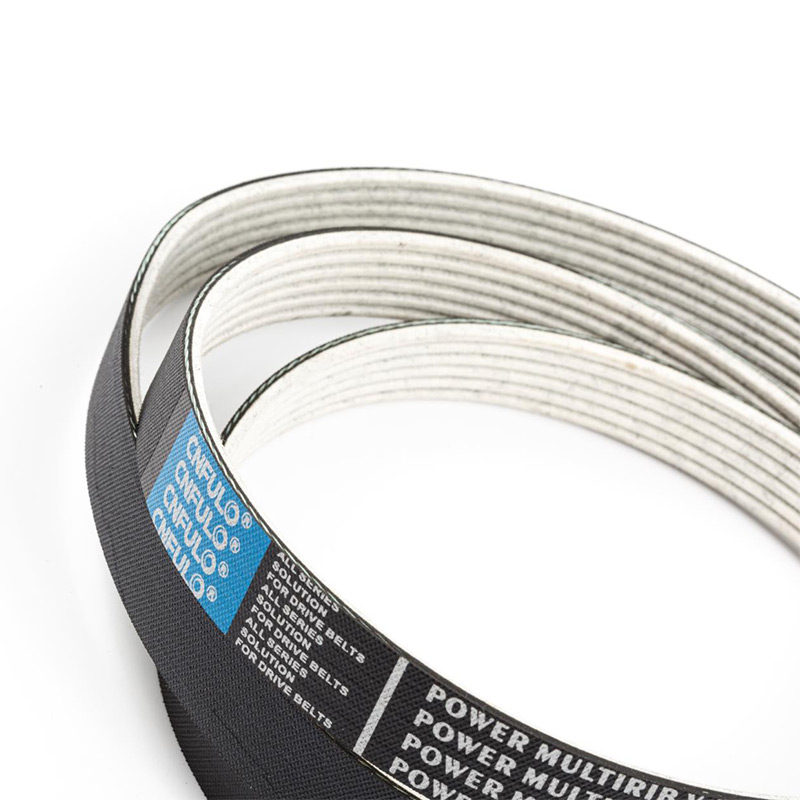Design and Contact Surface: Industrial V-ribbed belts, also known as poly-V belts, feature a flat design with multiple longitudinal ribs running along the belt's length. These ribs engage with matching grooves on the pulleys, providing a continuous and broad surface area for contact. The nature of this design allows for smoother engagement and operation, as the load is distributed more evenly across the contact surface. This even distribution of load reduces vibration and slippage, which are common sources of noise in belt-driven systems. Consequently, V-ribbed belts tend to operate more quietly, particularly in applications where minimizing operational noise is crucial. Synchronous belts, often referred to as timing belts, have a distinct toothed profile designed to engage precisely with corresponding grooves on the pulleys. This toothed engagement ensures exact synchronization of the driven components, which is critical for applications requiring precise timing. However, the meshing of these teeth during operation can produce noise, especially in high-speed or high-load applications. The intermittent contact between the belt teeth and pulley grooves, combined with potential misalignment or wear, can exacerbate this noise. As a result, synchronous belts are generally noisier compared to V-ribbed belts, particularly when operating under challenging conditions.
Operating Conditions: V-ribbed belts excel in a variety of operating conditions, particularly in low-speed or moderate-speed applications where noise reduction is a priority. The belt's flexibility and the continuous contact with the pulleys allow it to absorb minor variations in load and alignment, which contributes to quieter operation. Additionally, the multi-ribbed design helps to dampen vibrations that could otherwise lead to noise. In environments where machinery noise must be minimized, such as in HVAC systems, office equipment, or certain automotive applications, V-ribbed belts offer a significant advantage. While synchronous belts are designed for high precision and efficiency, they tend to generate more noise, especially at higher operational speeds. The noise arises from the repeated engagement and disengagement of the belt teeth with the pulley grooves, which can create a clicking or whirring sound. This effect is particularly pronounced when the belts are subject to high loads or rapid speed changes. In high-speed applications, the increased frequency of tooth engagement can lead to higher noise levels, making synchronous belts less suitable for noise-sensitive environments unless specific noise reduction measures are implemented.
Noise Reduction Strategies: To minimize noise in V-ribbed belt systems, it is essential to ensure proper installation and maintenance. This includes accurate tensioning to avoid slippage, which can lead to noise, and maintaining correct alignment between the belt and pulleys. Using high-quality belts made from advanced materials that offer enhanced flexibility and durability can further reduce noise levels. Additionally, selecting pulleys with smooth surfaces and optimal groove design can help in reducing friction and associated noise. Although synchronous belts are inherently noisier, noise can be mitigated through careful selection and maintenance. For instance, choosing belts with specially designed tooth profiles, such as those with curved or modified shapes, can reduce the impact noise associated with tooth engagement. Furthermore, using materials with sound-dampening properties or incorporating belt tensioners that absorb vibrations can help to lower noise levels. However, even with these strategies, synchronous belts may not achieve the same level of quiet operation as V-ribbed belts in comparable conditions.
